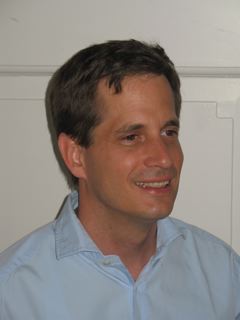The Theory of Causal Fermion Systems
Fock Space Structures
Prerequisites
Continue Reading
Related Topics
Causal fermion systems naturally give rise to Fock space structures, which come up in various ways at different stages of the constructions.
Bosonic Fock Space
The Euler-Lagrange equations are nonlinear equations for the measure $\rho$. An infinitesimal variation of the measure which preserves the Euler-Lagrange equations is described by a jet $\mathfrak{v}$ which satisfies the linearized field equations. Finite variations can be treated perturbatively, giving rise to a power expansion in terms of linearized solutions of the form
\[ \sum_{p=1}^\infty \lambda^p\: \mathcal{P}^{(p)} \big( \mathfrak{v}, \ldots, \mathfrak{v} \big) \:, \]
where $\mathcal{P}^{(p)}$ is a $p$-linear mapping from the linearized solutions to a suitable jet space (for details see [perturb17]). The idea for obtaining a dynamics on Fock spaces is to rewrite this multi-linear mapping as a linear mapping on the $p$-fold tensor product of the linearized solutions.
Another ingredient to the construction are the conservation laws for surface layer integrals. Indeed, combining the symplectic form with the surface layer inner product one obtains an almost complex structure on the subspace of the linearized solutions without scalar component, denoted by $\Gamma^\text{lin}$. This makes it possible to decompose the complexification $\Gamma^\C$ of $\Gamma^\text{lin}$ into the so-called holomorphic and anti-holomorphic subspaces,
\[ \Gamma^\C = \Gamma^\text{hol} \oplus \Gamma^\text{ah}\:. \]
The holomorphic subspace is endowed with the complex scalar product $(.|.):= \sigma(.,J.)$. Taking the completion gives the Hilbert space $(\mathfrak{h}, (.|.))$. The bosonic Fock space is defined as the corresponding symmetric Fock space,
\[ {\mathcal{F}} = \bigoplus_{p=0}^\infty \mathfrak{h}^p \:. \]
The norm on the Fock space is related to the nonlinear surface layer integral by
\[ \la \Psi | \Psi \ra_{\mathcal{F}} = \exp \big( \gamma^\Omega(\tilde{\rho}, \rho) \big) \:. \]
These constructions are useful for the analysis of the causal action principle because, as shown in [FK18], the dynamics as described by the Euler-Lagrange equations can be reformulated in terms of a norm-preserving linear operator on ${\mathcal{F}}^* \otimes {\mathcal{F}}$. This is very useful for getting a close connection to the standard formulation of bosonic quantum field theory.
Fermionic Fock Space
Fermionic fock spaces come into play in several ways. On the most fundamental level, one can take the wedge product of all the physical wave functions. In the case that $\H$ is finite-dimensional, one chooses an orthonormal basis $e_1, \ldots, e_f$ of $\H$ and sets
\[ \Psi = \psi^{e_1} \wedge \cdots \wedge \psi^{e_f} \:. \]
This Hartree-Fock state is unique up to a phase.
In interacting systems, the situation becomes more involved because the mechanism of microscopic mixing must be taken into account. This gives a close connection to fermionic quantum field theory.
Fock Representations of Operator Algebras
A more general construction where Fock spaces arise naturally is when constructing representations of operator algebras. For causal fermion systems, this construction as carried out in [FK21] for the algebra of field operators includes both the bosonic and the fermionic Fock space. The resulting quantum state is represented by a density operator on the Fock space.

Felix Finster
Author